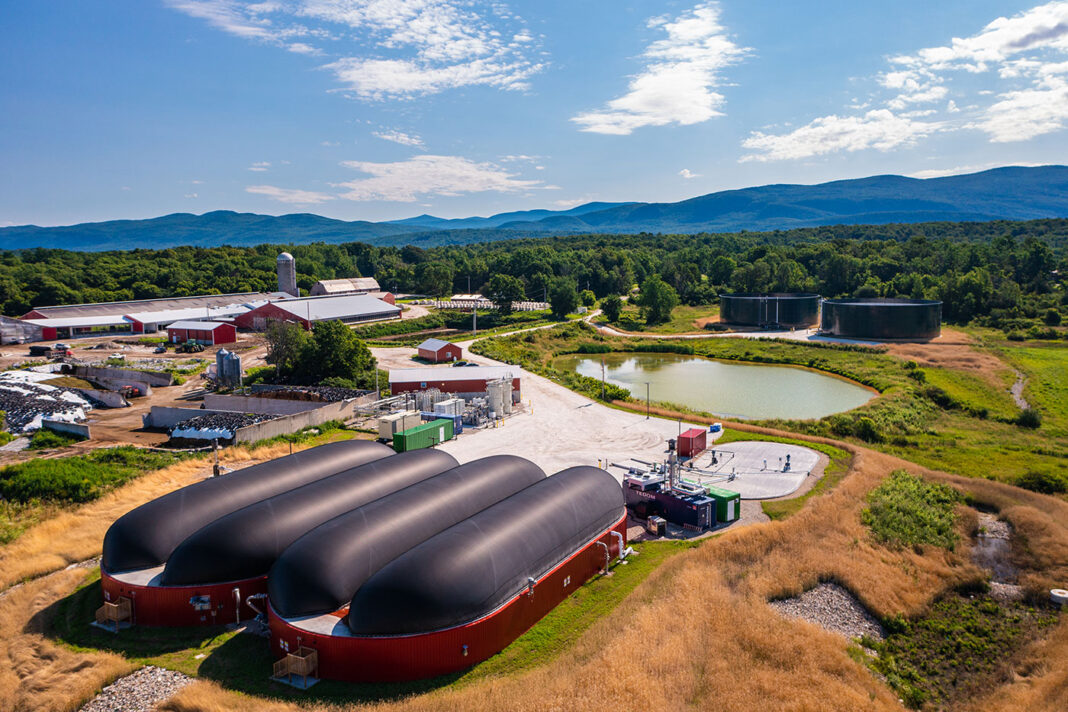Renewable energy production and biopharmaceutical manufacturing, at first glance, lack nexus. AstraZeneca, however, saw the connection and is using its expertise in biomanufacturing to help its partner, Vanguard Renewables, extract energy more efficiently from agricultural waste products.
The goal is to make the renewable natural gas (RNG) it develops cost about the same as that of natural gas generated from fossil fuels.
By expanding the collaboration between AstraZeneca and Vanguard Renewables, “we have the bold ambition of achieving a multiple-fold increase in productivity (for RNG production),” Andy Wirths, senior vice president, Supply–Americas, AstraZeneca, tells GEN.
To do this, AstraZeneca and Vanguard must increase RNG yields and generate a significant improvement in RNG production efficiency. Technological improvements and process optimization will be key factors in boosting outputs and enhancing efficiency, which, in turn, are expected to increase RNG cost-effectiveness and therefore ease many of the existing challenges to widespread deployment.
Vanguard Renewables collects food waste and depackages processed foods and beverages such as expired goods, off-spec batches, process waste, and scraps from food and beverage manufacturers, distributors, restaurants, and others. These organics may be combined with cow manure in anaerobic digesters that are located on farms.
From farmers’ perspectives, leasing part of their land to Vanguard for its digesters (known as Vangard Renewables’ Farm Powered® process) adds extra income, improves their manure management practices, reduces phosphorus runoff, and provides them with a liquid, low-carbon fertilizer so they need less chemical fertilizer.

According to Vanguard’s case studies, in one year, the digester at one Vermont dairy farm with 900 milking cows and more than 2,000 acres of hay and corn, received 65,700 tons of food waste and 36,500 tons of manure. It produced 140,000 Mcf of RNG.
On a smaller scale, a 650-acre farm in Massachusetts added 3,650 tons of manure from a variety of animals and 36,500 tons of organic waste. After digestion, that activity produced enough biogas to power a 1 MW engine, generating approximately 8,000 MWh of renewable energy annually.
The RNG produced by the digesters may be piped to local users or metered back into the energy grid.
AstraZeneca reasons that the expertise associated with bioreactor yield enhancements is transferrable among niches within the life sciences. Whether the product is proteins or RNG is a mere detail. Thus, one if its first priorities is to increase efficiency for Vanguard Renewables’ anaerobic digestors by optimizing the chemistry and process controls.
A second priority is to develop digital twins for the anaerobic digestion process to support faster modeling of any changes. Eventually, the models may incorporate artificial intelligence.
The third priority, he says, is to enhance supply chain robustness. For context, although not stated, such enhancements could include such things as real-time supply chain information that supports dynamic resource allocation within the Vanguard network of farms and organic suppliers, or even among energy grid customers.
Distraction or duty?
Historically, corporations that strayed beyond their core businesses risked distractions that ultimately diluted their attention. In the 1980s, petroleum giant Mobil Oil was a case in point, eventually divesting itself of Montgomery Ward department store chain and Golden Bear restaurants.
Wirths says that isn’t the case with AstraZeneca. Instead, the company’s goal to increase the efficiency of RNG production is an extension of its core expertise into a closely related area. Besides, he says, “From a healthcare perspective, reducing emissions is a moral imperative, as our core aim is to improve human health.”
“The climate crisis is the largest health crisis of our time,” Wirths asserts. “Climate-related deaths, including from air pollution, extreme temperatures, flooding, and drought, are growing.”
Although the objective of the healthcare sector is to improve health and save lives, he says, “The sector is also a significant contributor to the climate crisis.” He points to a 2019 report from researchers in Germany and Austria that attributes nearly 5% of all global emissions to the healthcare sector, and eight percent of those in advanced economies.
“It’s clear that, as a sector, we need to decarbonize,” Wirth says. The way to do that is to make the upfront costs of decarbonization cost-effective, which requires renewable energy to reach economic parity with the costs of fossil-based energy sources. When that is achieved, organizations will have sufficient financial justification to act.
By collaborating with Vanguard Renewables to improve the efficiency of RNG development, AstraZeneca says it aims to drive deep decarbonization internally and more broadly throughout the biopharmaceutical industry. This, Wirth explains, is one element in AstraZeneca’s aspiration to achieve net-zero emissions by 2045, and to halve emissions from 2015 levels across its value chain by 2030.
“We think of this as an investment in the future,” states Wirth, “just as we would invest in the development of new medicines.”


